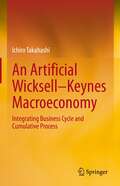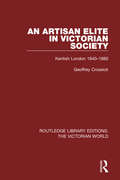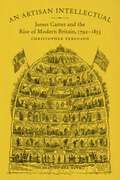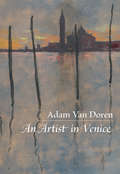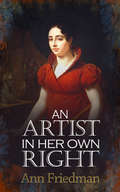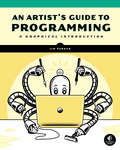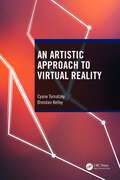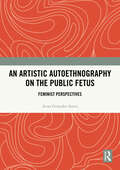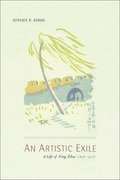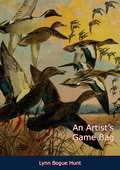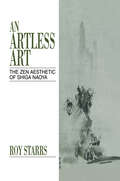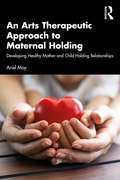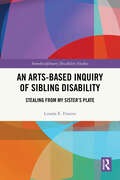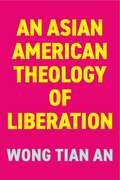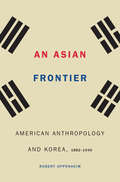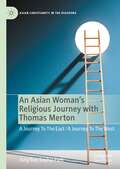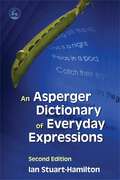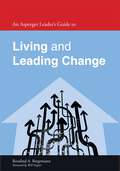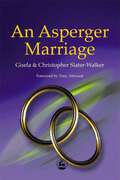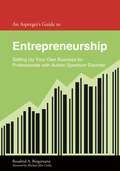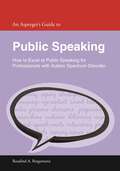- Table View
- List View
An Artificial Wicksell—Keynes Macroeconomy: Integrating Business Cycle and Cumulative Process
by Ichiro TakahashiThis book presents an agent-based macroeconomic model developed on the Keynesian principle of effective demand and the Wicksellian theory of cumulative process. The main purpose of the book is to demystify inherent forces that revive an economy from a long-run downturn. The model has three types of bounded-rational agents: firm, household, and bank. To highlight the autonomous revival mechanisms, the model is assumed to be completely closed and free from any external influences such as changes in management of aggregate demand or supply/demand shocks. The key finding of the book is that diversity of firms is a crucial element in reviving investment activities. While a production sector is represented by a single firm in a conventional model, this model has introduced a large number of heterogeneous firms that confront diverse constraints both at the firm and aggregate levels. The behaviours of these firms may vary despite being exposed to the same aggregate environment. For example, economic downturns usually precipitate a fall in real wages as a response to decreased aggregate demand. Most firms reduce their employment focusing on the reduction in aggregate demand. However, some firms identify a reduction in real wage as a sign of improving profitability hence they may expand employment. This could result in an increased aggregate demand and benefit other firms with further employment. It could even reverse the trend to an upslope, thereby ultimately achieving full of near full employment. This book details further on: (1) the rigidity of prices and wages in a stable economy (2) the fundamental factors to establish a robust and high-performing economy, with the focus on the importance of a stable and equitable macroeconomic environment.
An Artisan Elite in Victorian Society: Kentish London 1840-1880 (Routledge Library Editions: The Victorian World #9)
by Geoffrey CrossickFirst published in 1978. Mid-Victorian Britain was relatively stable in comparison with the turbulent period that preceded it, and that stability is in part explained by the emergence of an artisan elite with a specific relationship to the society around it. This book examines that elite: its clubs and societies, co-operatives and building societies; its values and ideology, challenging the notion that these artisans directly absorbed middle-class values; its politics, tracing the evolution from Chartism through the Reform League and on to a radical liberalism which existed in constant tension with the local liberal middle class. A careful reconstruction of the social, political and industrial life of these artisans is set within the context of the local communities, and their understanding of the mid-Victorian society in which they lived is seen as the explanation for their values and activities. This title makes a major contribution towards our understanding of the nineteenth-century working class.
An Artisan Intellectual: James Carter and the Rise of Modern Britain, 1792-1853
by Christopher FergusonIn An Artisan Intellectual, Christopher Ferguson examines the life and ideas of English tailor and writer James Carter, one of countless and largely anonymous citizens whose lives dramatically transformed during Britain’s long march to modernity. Carter began his working life at age thirteen as an apprentice and continued to work as a tailor throughout the first half of the nineteenth century, first in Colchester and then in London. As the Industrial Revolution brought innovations to every aspect of British life, Carter took advantage of opportunities to push against the boundaries of his working-class background. He supplemented his income through his writing, publishing often unsigned books, articles, and poems on subjects as diverse as religion, death, nature, aesthetics, and theories of civilization. Carter’s words give us a fascinating window into the revolutionary forces that upended the world of ordinary citizens in this era and demonstrate how the changes in daily life impacted personal experiences and intellectual pursuits as well as labor practices and living and working environments. Ferguson deftly explores a forgotten tailor’s varied responses to the many transformations that produced the world’s first modern society.
An Artist in Venice
by Adam Van DorenFor the depiction of Venice by artists, it's a high bar that's been set, but Adam Van Doren, grandson of the Pulitzer-prize-winning poet Mark Van Doren, convincingly confronts the competition in this charming memoir, a verbal and visual account of his love affair with the city. His story is personal; like all other artists, he sees the city with and through his own eyes, but he is also well-informed historically. He laces his tour with information, opinion, and citation. With Van Doren as guide, the reader's tour of the city is rich and convincing, filled with the presence of illustrious predecessors. With an informed preface by the scholar Theodore Rabb and a charming foreword by Simon Winchester, with 23 full-color drawings by the author/artist, and even six pages of commendably lucid notes on the personalities and structures discussed, this is a book that will proudly take its place alongside the many others that have celebrated this city for centuries.
An Artist in her Own Right
by Ann Marti FriedmanSet in France during the Napoleonic period, this is the story of painter Augustine Dufresne (1789-1842) the wife and widow of artist Antione-Jean Gros, painter of Jaffa.An Artist in Her Own Right explores the journey from Augustine's childhood during the French Revolution, through her artistic training and marriage during the Napoleonic era, and looks at the triumphs and challenges she faced in her life and art during the turbulent years that followed. The novel views this intensely masculine time through a woman's eyes.As little is known about Augustine’s life, this is a fictional biography based on the author's extensive research into the art and artists of the 18th and 19th centuries.
An Artist in her Own Right
by Ann Marti FriedmanSet in France during the Napoleonic period, this is the story of painter Augustine Dufresne (1789-1842) the wife and widow of artist Antione-Jean Gros, painter of Jaffa.An Artist in Her Own Right explores the journey from Augustine's childhood during the French Revolution, through her artistic training and marriage during the Napoleonic era, and looks at the triumphs and challenges she faced in her life and art during the turbulent years that followed. The novel views this intensely masculine time through a woman's eyes.As little is known about Augustine’s life, this is a fictional biography based on the author's extensive research into the art and artists of the 18th and 19th centuries.
An Artist's Guide to Programming: A Graphical Introduction
by Jim ParkerLearn to program with visual examples. Programs increase in complexity as you progress — from drawing a circle to 3D graphics, animations, and simulations.A Graphical Introduction to Programming teaches computer programming with the aid of 100 example programs, each of which integrates graphical or sound output. The Processing-language-based examples range from drawing a circle and animating bouncing balls to 3D graphics, audio visualization, and interactive games. Readers learn core programming concepts like conditions, loops, arrays, strings and functions, as well as how to use Processing to draw lines, shapes, and 3D objects. They&’ll learn key computer graphics concepts like manipulating images, animating text, mapping textures onto objects, and working with video. Advanced examples include sound effects and audio visualization, network communication, 3D geometry and animation, simulations of snow and smoke, predator-prey populations, and interactive games.
An Artist's Journey to Bali
by Betty ReynoldsWritten and illustrated by renowned artist Betty Reynolds, An Artist's Journey to Bali is a cultural exploration into the mysterious Indonesian island of Bali. In this beautifully illustrated artist's sketchbook, the author shares her good fortune of meeting many Balinese who allowed her to witness important aspects of their lives and culture, and to participate in the religious rituals that mark their passage through the major stages of life.
An Artist's Journey to Bali
by Betty ReynoldsWritten and illustrated by renowned artist Betty Reynolds, An Artist's Journey to Bali is a cultural exploration into the mysterious Indonesian island of Bali. In this beautifully illustrated artist's sketchbook, the author shares her good fortune of meeting many Balinese who allowed her to witness important aspects of their lives and culture, and to participate in the religious rituals that mark their passage through the major stages of life.
An Artist's Journey to Bali
by Betty ReynoldsAn Artist's Journey to Bali is much more than your usual tourist guide to the beautiful and mysterious Indonesian island of Bali. Written and illustrated by renowned artist Betty Reynolds, this book contains the author's Balinese watercolor art depicting the wonderful island whose inhabitants are known to adhere to daily rituals that, although unfamiliar to foreigners, give the island and its people a distinct aura of mystery and magic.In this beautifully illustrated artist's sketchbook, the author shares her good fortune of meeting many Balinese who allowed her to witness important aspects of their lives and culture, and to participate in the religious rituals that mark their passage through the major stages of life.If Bali travel is in your future, this is a great book to have. It takes you right into the Balinese culture, exploring the art of Bali, unveiling the traditions and spirituality in that part of the world. Take a rare journey to a beautiful place, as Betty invites you to experience it with an artist Journey to Bali.
An Artistic Approach to Virtual Reality
by Cyane Tornatzky Brendan KelleyA special quality about the medium of virtual reality is its immersive nature, allowing users to disengage from the physical world around them in order to fully interact with a digital environment. An Artistic Approach to Virtual Reality traces the lineage of artist/technologists who have worked with virtual reality in its infancy to the interactive virtual work of contemporary artists such as Laurie Anderson. Interlaced within a survey of artists whose works fit in the boundary of the interactive virtual medium, this book teases out what qualifies as interactive virtual artworks. The authors discuss the theories behind basic mechanics required to enter the virtual reality space and investigate theories around visual and embodied conceptual space. Key Features: · Explores theoretical and practical aspects of using virtual reality for artistic practice. · Includes examples and discussion of virtual reality artworks from award-winning artists. · Discusses topics relevant to virtual reality that are pertinent and persist throughout hardware and software changes. · Provides historical and contemporary discussion of virtual reality artistic works.
An Artistic Autoethnography on the Public Fetus: Feminist Perspectives
by Anna Gonzalez SueroAn Artistic Autoethnography on the Public Fetus explores artistic work with the iconic image of the fetus and the personal consequences of the image by analyzing the so-called public fetus within a feminist approach.This book develops a deeply interdisciplinary body of research, engaging with feminist debates on reproductive technology and imagery, art theory, visual histories of anatomical imagery, cultural critiques of the myth of the artistic genius, Gestalt understandings of perception and memory, and anthropological theories of liminality. Through blurring the artistic with the scientific, it explores the potential of autoethnography to serve as a form of conscious raising through which to create new images and stories that counter the public fetus in support of reproductive autonomy and social justice.This book will be useful to feminist scholars who work with issues related to gender, reproduction, sexuality, and autoethnography. At the same time, the book will be of value to undergraduate and graduate students in gender studies as an example of how an autoethnographic process can make unrecognized experiences of gender known to a person.
An Artistic Exile: A Life of Feng Zikai (1898-1975)
by Geremie R. BarmeThis book, a blend of biography and criticism, tells the story of Feng Zikai (1898-1975), one of the most gifted and important artists to emerge from the politically tumultuous decades of the 1920s and 1930s. Geremie R. Barme provides a closely woven parallel history, that of the life of writer-artist Feng, who was also an essayist and a translator, and that of China's turbulent twentieth century.
An Artist’s Game Bag
by Lynn Bogue HuntAmerica’s leading bird painter has pictured every game bird, both upland, wild fowl and shore birds—including the predatory hawks and owls—found in the United States.This book not only represents a unique collection of the art of Lynn Bogue Hunt—including the finest work he has ever done—but is an ornithologically correct guide to American game birds.This superb collection is beautifully illustrated with drawings and painting.
An Artless Art - The Zen Aesthetic of Shiga Naoya: A Critical Study with Selected Translations
by Roy StarrsShiga Naoya was a giant of Japanese literature but he is barely known outside Japan. This book is the first study of Shiga to explore in depth his affinities - both aesthetic and philosophic - with the long tradition of Zen art.
An Arts Therapeutic Approach to Maternal Holding: Developing Healthy Mother and Child Holding Relationships
by Ariel MoyLittle research has explored the everyday, simple and long-term experience of maternal holding, particularly after the first year of a child’s life. The research that has been undertaken commonly examines holding through the lens of attachment with a focus on the impact of holding upon the child. Employing an arts-based collaborative inquiry approach, participants’ stories of holding, as well as the author’s own, convey the significant maternal experiences of holding their children over individual arts therapeutic sessions. Optimal moments of holding included strange, powerful and meaningful experiences of expansion into self-in-relationship. Attention is drawn to the ways in which holding can alert us to the current state of mother/child relationships; how we understand, story and structure those relationships; and the ways in which we can attend to holding in order to develop deeply satisfying experiences of a mother/child ‘us’. An Arts Therapeutic Approach to Maternal Holding aims to draw attention to the intersubjective qualities of the mother/child relationship, explore why holding matters, and offer suggestions for therapeutic practice. This book is essential reading for therapeutic practitioners and those in allied health fields who work with mothers and children.
An Arts-Based Inquiry of Sibling Disability: Stealing from My Sister’s Plate (Interdisciplinary Disability Studies)
by Linnéa E. FranitsThis book examines texts and other artistic products rendered by siblings of individuals with disabilities in order to interrogate the impact of disability on the identity of non-disabled siblings. This includes an arts-based analysis of the author’s own experiences as the sister of a woman with disabilities as depicted in photo essays and autoethnographic texts. By providing an alternate presentation of the topics surrounding sibling disability it gives readers a deeper and broader perspective of the lived experience of sibling disability by introducing them to some of the knowledge that is specifically, and perhaps singularly available to siblings of people with disabilities. Presenting findings from narrative analysis, visual analysis, autoethnographic and arts-based research related to sibling disability, it challenges the grand narratives that persist in many cultural products and medical discourses around sibling disability.It will be of interest to all scholars and students of disability studies, sociology, childhood studies, family studies and the arts more broadly.
An Asian American Theology of Liberation
by Tian An WongWhat does liberation mean for Asians at the core of an anti-Black, settler-colonial empire? This landmark book is the first to offer an Asian American theology of liberation for the present and future global crises. The broad scope of contemporary ideas that the book engages with will be of interest to students, activists, clergy, and scholars alike. Readers interested in radical politics, political theology, and Asian American history will find this book an important addition to their bookshelves. Providing an intersectional frame that considers the breadth and diversity of Asian American experiences alongside those of Black, Indigenous, and Latinx thinkers in the United States and across the globe, An Asian American Theology of Liberation puts Asian American theology in dialogue with theories from psychoanalysis, Afro-pessimism, Black Marxism, postcolonial studies, and queer theology. In this groundbreaking work, Wong Tian An combines archival research uncovering a much overlooked theology of liberation — born in the 1970s out of Asian Americans’ struggles for political recognition and civil rights in the United States — with powerful analyses drawing from the theological, intellectual, and political developments of the last half century. This wide-ranging study connects urgent themes such as protest movements in Hong Kong, anti-Asian violence in the United States, and Indigenous struggles everywhere, while building on Asian theologies such as Dalit theology in India, theology of struggle in the Philippines, and Minjung theology in Korea. Drawing deeply and broadly across disciplines, the book altogether revives and renews an Asian American theology of liberation for a new generation.
An Asian Frontier: American Anthropology and Korea, 1882–1945 (Critical Studies in the History of Anthropology)
by Robert OppenheimIn the nineteenth century the predominant focus of American anthropology centered on the native peoples of North America, and most anthropologists would argue that Korea during this period was hardly a cultural area of great anthropological interest. However, this perspective underestimates Korea as a significant object of concern for American anthropology during the period from 1882 to 1945—otherwise a turbulent, transitional period in Korea’s history. An Asian Frontier focuses on the dialogue between the American anthropological tradition and Korea, from Korea’s first treaty with the United States to the end of World War II, with the goal of rereading anthropology’s history and theoretical development through its Pacific frontier. Drawing on notebooks and personal correspondence as well as the publications of anthropologists of the day, Robert Oppenheim shows how and why Korea became an important object of study—with, for instance, more published about Korea in the pages of American Anthropologist before 1900 than would be seen for decades after. Oppenheim chronicles the actions of American collectors, Korean mediators, and metropolitan curators who first created Korean anthropological exhibitions for the public. He moves on to examine anthropologists—such as Aleš Hrdlicka, Walter Hough, Stewart Culin, Frederick Starr, and Frank Hamilton Cushing—who fit Korea into frameworks of evolution, culture, and race even as they engaged questions of imperialism that were raised by Japan’s colonization of the country. In tracing the development of American anthropology’s understanding of Korea, Oppenheim discloses the legacy present in our ongoing understanding of Korea and of anthropology’s past.
An Asian Woman's Religious Journey with Thomas Merton: A Journey To The East / A Journey To The West (Asian Christianity in the Diaspora)
by Jung Eun ParkJoin Jung Eun Sophia Park on her personal quest for God and her true self through the writings of Thomas Merton. Approaching Merton as an Asian immigrant feminist in the postcolonial era, Park's perspective is a unique one, and in this dance sometimes it is her and sometimes Merton who leads. Throughout, Eastern and Western spirituality are organically woven together in reflection on Merton's narratives and in the examination of late capitalism, poverty, beauty, and violence. These reflections are insightful, provocative, and illuminating, particularly with regard to his androcentric spirituality, especially as it relates to his relationships with women.
An Asperger Dictionary of Everyday Expressions: Second Edition
by Ian Stuart-HamiltonThis revised and expanded edition adds over 300 new expressions that help unlock the meaning of everyday expressions. Both informative and entertaining, the book addresses an important aspect of social communication for people with Asperger Syndrome, who use direct, precise language and `take things literally'. This dictionary aims to dispel any confusion that arises from the misinterpretation of language. It provides explanations of over 5000 idiomatic expressions and a useful guide to their politeness level. Each expression is accompanied by a clear explanation of its meaning and when and how it might be used. The expressions are taken from British and American English, with some Australian expressions included as well. Although the book is primarily intended for people with Asperger Syndrome, it will be useful for anyone who has problems understanding idiomatic and colloquial English. An essential resource and an informative read; this dictionary will assist in a wide range of situations.
An Asperger Leader's Guide to Living and Leading Change
by Rosalind Bergemann Will NapierPeople with Asperger Syndrome (AS) often struggle with change and this is magnified when it is part of their professional role to manage and lead change. Written by a business leader with Asperger Syndrome, this practical guide provides advice and strategies for coping with and implementing change in the workplace. Combining theory and practice with case studies and hands-on tools, the book aims to help those who find change particularly difficult to overcome these challenges and use their unique talents and skills to become change champions in the workplace. The book explores the change management life cycle and how it affects leaders with AS and teaches key skills for successfully leading change, preparing staff for change, and dealing with the effects of change on the organisation as a whole. This is a vital leadership development handbook for executive-level business professionals with Asperger Syndrome as well as those who aspire to careers in these roles.
An Asperger Marriage
by Tony Attwood Gisela Slater-Walker Christopher Slater-WalkerChris and Gisela have been partners for twelve years. Four years ago Chris was diagnosed with Asperger syndrome. For Chris, this was an explanation of why he had always regarded himself as 'socially handicapped'. For Gisela, it meant coming to terms with a marriage in which there would never be an intuitive understanding despite Chris's good intentions. For the couple it was the beginning of a long and still unfinished process of learning to live with a disability regarded by some as incompatible with marriage.
An Asperger's Guide to Entrepreneurship: Setting Up Your Own Business for Professionals with Autism Spectrum Disorder
by Michael John Carley Rosalind BergemannEntrepreneurship can be an ideal career option for enterprising individuals with Asperger Syndrome (Autism Spectrum Disorder) and this detailed guide explains how to tell if being self-employed is right for you and how to go about starting and growing your own business. Written by a successful entrepreneur and business consultant with Asperger Syndrome, this book provides all the guidance you need on the practicalities of starting up a company. The unique strengths that people with Asperger Syndrome can bring to a new business venture are highlighted and solutions are offered for elements of entrepreneurship that can create stumbling blocks such as developing working relationships within your company, marketing yourself and your business, managing finances, networking and maintaining a healthy work-life balance. Full of pragmatic advice, case studies from established business owners with Asperger Syndrome and practical tools for professional development, this is an essential startup handbook for anyone on the spectrum considering making the leap to becoming an entrepreneur.
An Asperger's Guide to Public Speaking: How to Excel at Public Speaking for Professionals with Autism Spectrum Disorder
by Rosalind A. BergemannThis practical guide to effective public speaking for professionals with Asperger Syndrome (Autism Spectrum Disorder) provides tailored advice on using your Asperger strengths to your advantage and overcoming areas of challenge to find your public speaking voice. Written by a business leader with Asperger Syndrome, it includes guidance and hands-on tools for preparation, research and delivery of successful speeches and presentations. It addresses all the key areas that can cause particular difficulty for people with Asperger Syndrome such as coping with anxiety, interpreting the facial expressions of your audience, awareness of your own body language as projected to others, sensory overload issues caused by the speaking environment, and surviving post-speech networking and social events. Whether giving a presentation at a meeting, hosting a corporate event, or delivering an autism awareness speech, this book provides all the guidance that professionals with Asperger Syndrome need to master public speaking.
